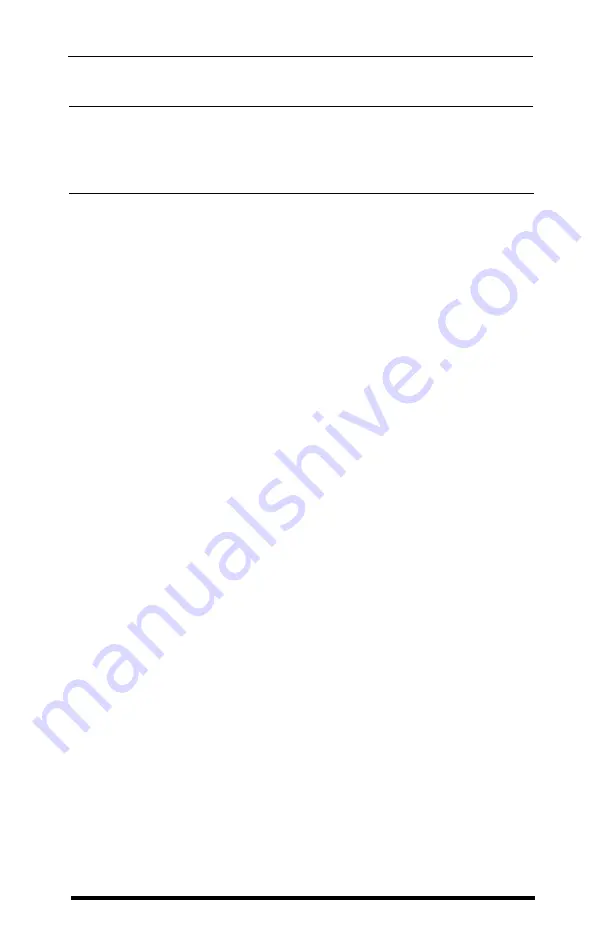
Note
This command will cancel any user-defined characters you have already
created. You must send this command to the printer before you define
characters.
Specifying the width and height
The example program uses 136 for
al
(in line 130 of the definition
program), but you can use other values. The number al specifies two
things: the width of the character and its position on the grid. The width
is used when the character is printed in proportional mode.
If you want a character to use the bottom eight pins, use the third
grid in Figure 6-5.
A value of 136 is suitable for all characters that use the top eight pins
and start in column 1 and finish in column 9. For a character the same
width, but printed with the bottom eight pins,
al
should be 8. For any
other character follow these rules to calculate
al:
1. If you design a character narrower than nine columns, you can
balance the number of empty columns on either side with the
following method: Starting with
al
equal to 8, subtract 1 for every
blank column on the right and add 16 for every blank column on
the left.
2. If the character should be printed with the top eight pins, add 128.
For example, if a character uses the top eight pins and starts in
column 3 and ends in column 7, the calculation is as follows:
l
start with al = 8
l
subtract 2 for two blank columns on the right, giving al = 6
l
add 32 for two blank columns on the left, giving
al = 38
l
add 128 to print with the top eight pins, so that al = 166.
Mixing print styles
The user-defined characters can be used in combination with most
print styles (except NLQ, of course). For example, emphasized and
doublewidth work well with user-defined characters.
Graphics and User-defined Characters
6-17
Summary of Contents for EX-1000
Page 1: ......
Page 11: ......
Page 29: ...1 18 Setting Up the Printer ...
Page 38: ......
Page 46: ...3 8 Using the EX with Application Programs ...
Page 51: ......
Page 57: ...5 6 EX Printer Features ...
Page 76: ......
Page 81: ...Command Summary A 5 ...
Page 82: ...A 6 Command Summary ...
Page 121: ......
Page 123: ...Table B 1 Epson mode characters B 2 Character Tables ...
Page 124: ...Table B 1 continued Character Tables B 3 ...
Page 125: ...Table B 1 continued B 4 Character Tables ...
Page 126: ...Table B 1 continued Character Tables B 5 ...
Page 127: ...Table B 1 continued B 6 Character Tables ...
Page 128: ...Table B 1 continued Character Tables B 7 ...
Page 129: ...Table B 1 continued B 8 Character Tables ...
Page 133: ...Table B 4 IBM printer emulation mode characters B 12 Character Tables ...
Page 134: ...Table B 4 continued Character Tables B 13 ...
Page 135: ...Table B 4 continued B 14 Character Tables ...
Page 137: ...Table B 4 continued B 16 Character Tables ...
Page 139: ...Table B 4 continued B 18 Character Tables ...
Page 151: ...D 8 Problem Solving and Maintenance ...
Page 157: ...E 6 Defaults and DIP Switches ...
Page 172: ......
Page 173: ...G 8 Technical Specifications ...
Page 183: ...IN 4 Index ...
Page 184: ...Quick Reference ...
Page 186: ......
Page 187: ......
Page 188: ......
Page 189: ......
Page 190: ......






























